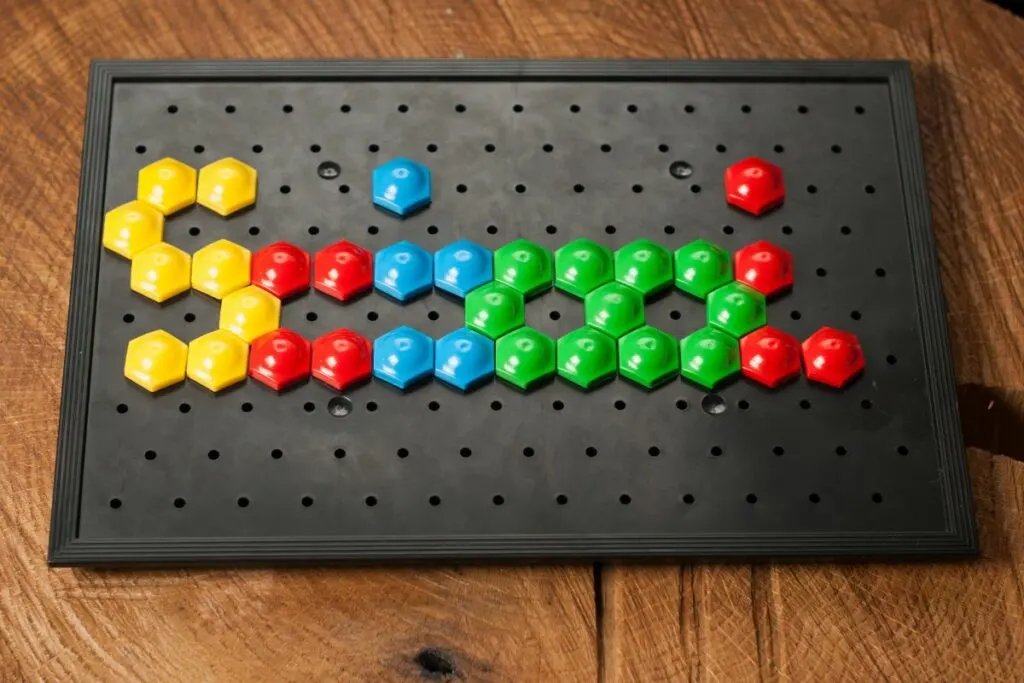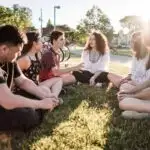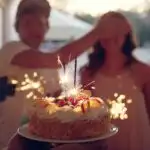Hexagons are a great way to introduce young children to the world of geometric shapes outside of squares, circles, and triangles.
This can be taught as early as first grade as your students begin to recognize 2D shapes and count sides and edges.

A “six-sided shape” is the easiest answer you can provide if one of your students has ever asked you, “What is a hexagon?”
But learning should be fun!
So, how can you teach your class about hexagons with lessons that will engage them and help them to learn quickly?
We’ve provided a handful of ideas for you below.
These classroom ideas are exciting and interactive ways that you can teach your elementary school class about hexagons, covering all the different learning styles, from visual to kinesthetic learning.
1. Connect The Dots
Creating a connect the dots exercise is one of the easiest and quickest ways you can teach your elementary students about hexagons.
This exercise is simple and hands-on in a fun way, allowing your students to learn visually through drawing and problem-solving.
You can offer this exercise by printing a connect the dots hexagon online or creating your own illustration.
You can also make the exercise more exciting and creative by getting your students to draw or write in the hexagon (such as a list of their six favorite things) and add color with crayons or paints.
2. Hexagon Art
Drawing and painting is always a great way to engage and teach elementary students while encouraging their creativity and expression.
You can provide a hexagon template for them to color in as they like or guide them to draw and paint a hexagon from scratch.
This is another exercise that you can get extra creative with.
You can get your class to draw and paint six different hexagons to reinforce the number of sides on a hexagon, write inside their painted hexagons, or create a collage of hexagons to put up on the wall as a classroom display.
3. Hexagon Puzzles
You can offer puzzles for your class to solve to help them familiarize themselves with hexagons.
This exercise can be done in a number of ways, from sheet puzzles to group exercises that encourage the students to create hexagons using paper cutouts of triangles and squares or items found around the classroom.
A great sheet puzzle might ask them to find, count, and mark the hexagons from a collage of different shapes and patterns.
You could also make the exercise more interactive by creating paper cutouts of various shapes and asking the children to pick out and separate the hexagons.
4. Hexagon Arts And Crafts
Coming up with a hexagon-themed arts and crafts exercise is another great way to engage your students.
This can involve creating hexagon shapes with various crafts, such as craft sticks and pipe cleaners, or cutting out cardboard hexagons for the children to color and decorate with glitter, googly eyes, stickers, or buttons.
Through arts and crafts activities, you can get your students to demonstrate their knowledge of geometric shapes while encouraging their artistic expression.
You could make the exercise more class-friendly by creating a large hexagon drawing for the kids to decorate as a collage.

5. Hexagon Math Problems
To help your elementary class understand and memorize the number of sides on a hexagon, you can provide simple but fun math problems for the kids to solve.
By creating your own math problems themed around hexagons or even the number six, you can also make the learning exercise more effective and memorable.
This is yet another method of teaching your students about hexagons that they will enjoy individually, in groups, or as a class.
You can design these math exercises so that they involve counting, addition and subtraction, basic problem-solving, measuring, and more.
6. Real-Life Hexagonal Objects
There are many real-life hexagonal objects that you can ask your students to think about and list.
This can help them to improve their perception, memorization skills, and ability to think quickly, especially if you present it as a memory exercise.
You could also ask your students to go home and keep an eye out for everyday hexagonally shaped objects to talk about in the next class.
This can include honeycomb patterns in everyday objects (such as soccer balls), stop signs, pens and pencils, nuts and bolts, and lots more.
7. Hexagon Stories
Some elementary students absorb and retain information better through reading and auditory learning.
This makes storytelling another effective idea to help your class learn about hexagons and other geometric shapes.
You could find published children’s stories that involve shapes or create your own story to read to the class.
For more involvement, you could also brainstorm and ad-lib a hexagon-themed story with your students as a fun way to stimulate their imagination and creativity.
8. Hexagon Videos And Games
For visual learners, showing your class educational videos that involve hexagons is a great way to bolster their learning.
YouTube can be a great educational resource for this, as well as free online e-learning videos about shapes and geometry.
In addition to videos, you could also present educational games to your class involving shapes.
This could be online educational games or interactive games played in groups, benefitting both visual and kinesthetic learning techniques.
Conclusion
There are many ways you can teach young students about hexagons and how to recognize different shapes and patterns. The above are just a few examples!
What’s most important is making the exercises fun and varied for the whole class. This will enrich their learning process and help your students learn about hexagons and other shapes, no matter their learning style.
Overall, shapes are one of the most enjoyable subjects for elementary children. On top of that, there are many different ways you can inject creativity, interactivity, problem-solving, and more into each learning exercise.
In the same way you encourage your students, think about how you can get creative with it!
- Homeschooling In High School: Pros And Cons - February 24, 2024
- How Do I Withdraw My Child From School To Homeschool? - February 23, 2024
- How To Not Go Crazy Homeschooling Kids: A Guide For Frazzled Parents - February 22, 2024









Leave a comment